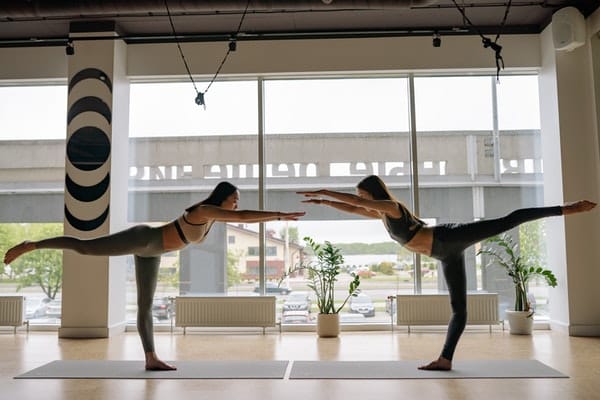
Practice Tibetan yoga poses for vitality, rejuvenation and flexibility. These simple exercises have a long history of providing youthfulness and strength.
Unless you’re Captain Jack Sparrow, finding a teacher of Tibetan yoga is almost as tricky as finding the Fountain of Youth. The origin of these exercises comes from a Himalayan monastery that was found by a British Army colonel, who brought the secret of the rites to the West, according to Alan Davidson, founder of ThroughYourBody.com. The monks claimed that these rites prolonged life. Tibetan yoga is physical yoga with poses similar to other styles, but these exercises should be performed quickly, unlike many Hatha routines.
Staff to Plank Pose Combination
The staff pose to upward plank pose is a Tibetan yoga exercise that combines two well-known postures you will find in Hatha and other yoga styles. This combination improves wrist strength and neck agility. The arms, glutes, core and legs get stronger from these poses, according to Yoga Journal. Start sitting on the carpet with your legs straight in front of you and your hands next to your sides. It is a staff pose. The back is straight, as are the arms with the hands in line with the shoulders. Tilt your chin toward your chest. Then, press your hips toward the ceiling and move your head back to look up. Your neck, spine, and thighs form a straight line. The knees align with the ankles.
The Down Dog and Cobra Combination
The down dog and cobra are two distinct yoga poses but moving back and forth between them is a Tibetan yoga exercise that stretches the legs, shoulders, abdomen, and neck. Start in a downward-facing dog pose to do this exercise. The body makes an inverted “V” in down dog with the arms and legs straight and the palms and feet on the floor. From down dog, gently drop the hips and legs to the bottom to move into cobra. Keep the upper body off the floor, arch your back, and look upward. The hands are in line with your shoulders, and your arms are straight.
Coming In and Out of the Camel
Camel pose in Tibetan yoga is less extreme than in other yoga styles. Camel pose is only a minor backbend in Tibetan yoga. It stretches the abdomen and neck, according to Yoga Journal. It also strengthens the glutes. Kneel with your shins on the floor and your knees, hips and shoulders in line to do this pose. Tilt your neck forward first and then extend the neck back. As you stretch the neck, relax the lower back and slide your hands down the outside of your thighs as you arch your back. Pause briefly and then return to the starting position.
Strength and Flexibility
Practicing a short Tibetan yoga sequence increases strength and flexibility while warming up the body. Starting your day with a few yoga exercises is an energizing way to begin, though you can also use the poses as an afternoon pick-up. LifeEvents.org recommends doing Tibetan yoga two to three times a day.